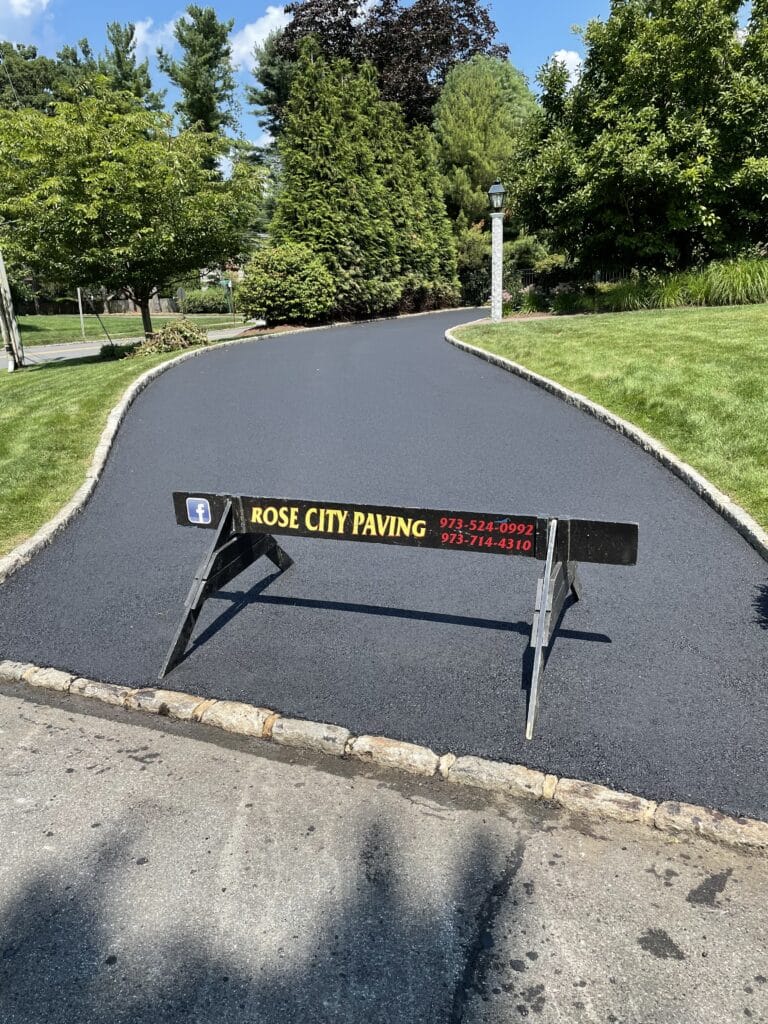Understanding Tilted Parking: How Asphalt Sealing Enhances Industrial Great Deals
Hot Mix Asphalt: A Lasting Service for Pavement
Hot Mix Asphalt (HMA) has actually arised as a leading sustainable selection for pavement remedies, using a myriad of cutting-edge technologies and ecological benefits. As the need for green building and construction methods grows, checking out the nuances of HMA's sustainability can supply valuable understandings into the future of pavement options.
Environmental Benefits of Hot Mix Asphalt

Moreover, Warm Mix Asphalt helps to reduce city warmth island impacts. Its dark color absorbs sunlight, lowering the amount of heat mirrored back into the environment compared to lighter-colored sidewalks. This can lower ambient temperature levels in urban areas, reducing the need for air conditioning and eventually reducing energy consumption.
On top of that, Warm Mix Asphalt adds to boosted stormwater management. Its porous nature enables water to penetrate the sidewalk and recharge groundwater supplies, decreasing overflow and the risk of flooding. These ecological advantages make Hot Mix Asphalt a lasting option for leading highways and roads.
Energy Effectiveness in HMA Manufacturing
Is power performance a critical factor in the manufacturing of Hot Mix Asphalt (HMA)? Power plays a significant duty in the production of HMA, impacting both price and ecological sustainability. One vital element of energy performance in HMA manufacturing is the usage of cozy mix asphalt (WMA) innovations.
In addition, developments in plant technologies have led to even more energy-efficient HMA production processes. By maximizing power usage in HMA production, the sector can reduce its carbon footprint while preserving high-quality pavement materials.
Recyclability of Hot Mix Asphalt
The recyclability of Hot Mix Asphalt (HMA) is a crucial aspect of its sustainability and long-lasting ecological influence. HMA is one of the most recycled products in the USA, with over 100 million lots of recovered asphalt sidewalk (RAP) being reused every year in brand-new sidewalk building. Reusing HMA provides numerous environmental benefits, such as decreasing the requirement for virgin products, decreasing power consumption during production, and decreasing the amount of waste sent to landfills.
The procedure of reusing HMA entails milling the existing sidewalk, squashing it into smaller pieces, and mixing it with new accumulation and asphalt binder to produce this link a recycled mix. In general, the recyclability of HMA plays a significant function in advertising sustainable methods within the sidewalk sector.

Long-Term Efficiency of HMA
Asphalt sidewalks demonstrate durability and resilience over an extensive period, reflecting the long-term performance of Warm Mix Asphalt (HMA) The longevity of HMA can be credited to its capability to stand up to rush hour lots, extreme weather condition conditions, and the effects of aging. Researches have actually revealed that properly designed and correctly built HMA pavements can last for 20 years or even more with normal maintenance. The key to maximizing the long-term efficiency of HMA hinges on utilizing high-grade products, complying with finest practices in building, and executing effective maintenance strategies. Proper water drainage, regular inspections, and prompt click reference repairs are vital for protecting the architectural honesty of HMA pavements gradually. Furthermore, developments in HMA technology, such as the usage of polymer-modified binders and warm mix asphalt, have better improved the sturdiness and longevity of HMA sidewalks. By prioritizing quality building and construction and maintenance techniques, HMA continues to prove itself as a cost-effective and lasting option for lasting pavement facilities.

HMA: Resilience and Sustainability
Demonstrating both longevity and sustainability, Warm Mix Asphalt (HMA) has actually ended up being a keystone in the construction of resilient pavement facilities - hot mix asphalt. HMA's longevity comes from its capacity to endure hefty loads, extreme weather, and high website traffic volumes, making it a reliable option for highways, highways, and flight terminal paths. The composition of HMA, which normally consists of aggregates, binder, and filler, plays a critical role in improving its longevity and resistance to damage
Furthermore, HMA's sustainability exists in its recyclability and energy-efficient manufacturing process. The capability to recycle redeemed asphalt pavement (RAP) in new HMA blends lowers the demand for virgin materials and lessens the ecological impact of sidewalk building and construction and maintenance. Additionally, the energy effectiveness of producing HMA hinges on its lower mixing temperatures contrasted to various other sidewalk products, leading to minimized power consumption and greenhouse gas discharges.
Final Thought
To conclude, hot mix asphalt (HMA) offers a lasting solution for pavement with its eco-friendly qualities. HMA's recyclability, energy effectiveness in production, and long-term toughness make it an environmentally friendly choice for road construction. By conserving all-natural sources, lowering waste, and decreasing greenhouse gas exhausts, HMA plays a critical duty in advertising sustainability in facilities advancement. Its ability to mitigate city warmth island results additionally highlights its value in developing environmentally conscious and resilient sidewalk systems.
HMA is one click for more of the most recycled materials in the United States, with over 100 million loads of redeemed asphalt pavement (RAP) being recycled every year in new sidewalk construction.The procedure of recycling HMA entails grating the existing sidewalk, crushing it right into smaller items, and mixing it with brand-new aggregate and asphalt binder to produce a recycled mix.Asphalt pavements demonstrate resilience and resilience over an extensive period, reflecting the long-term performance of Hot Mix Asphalt (HMA) Additionally, developments in HMA modern technology, such as the use of polymer-modified binders and cozy mix asphalt, have actually better enhanced the sturdiness and long life of HMA pavements. The ability to recycle redeemed asphalt sidewalk (RAP) in new HMA mixtures lowers the need for virgin products and reduces the environmental influence of pavement building and upkeep.